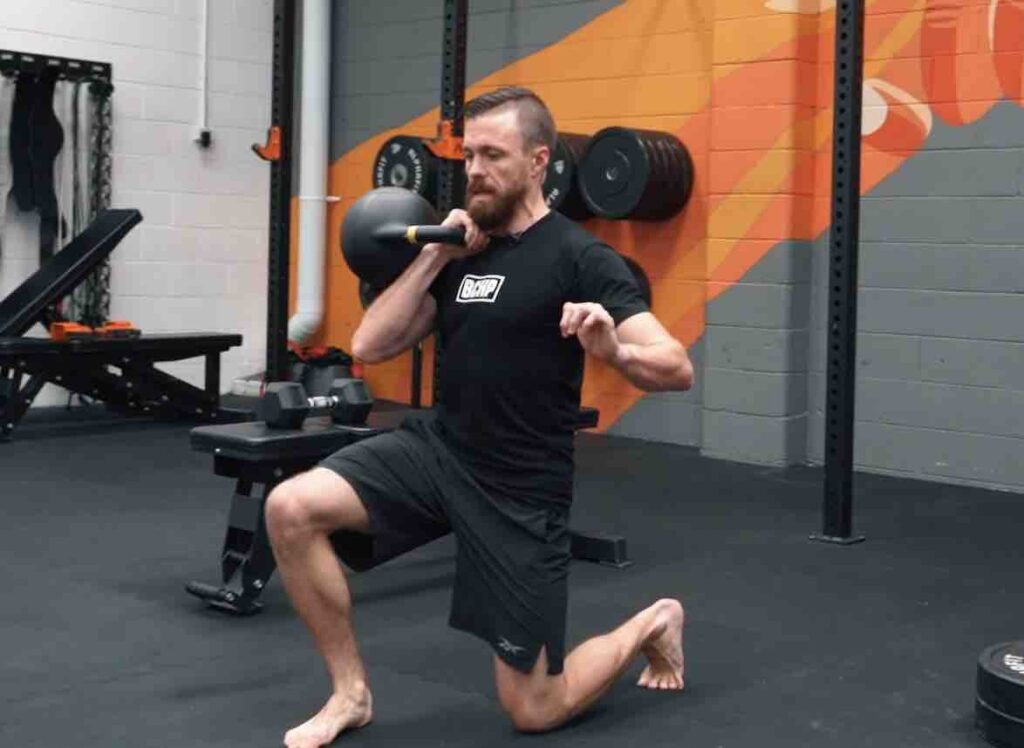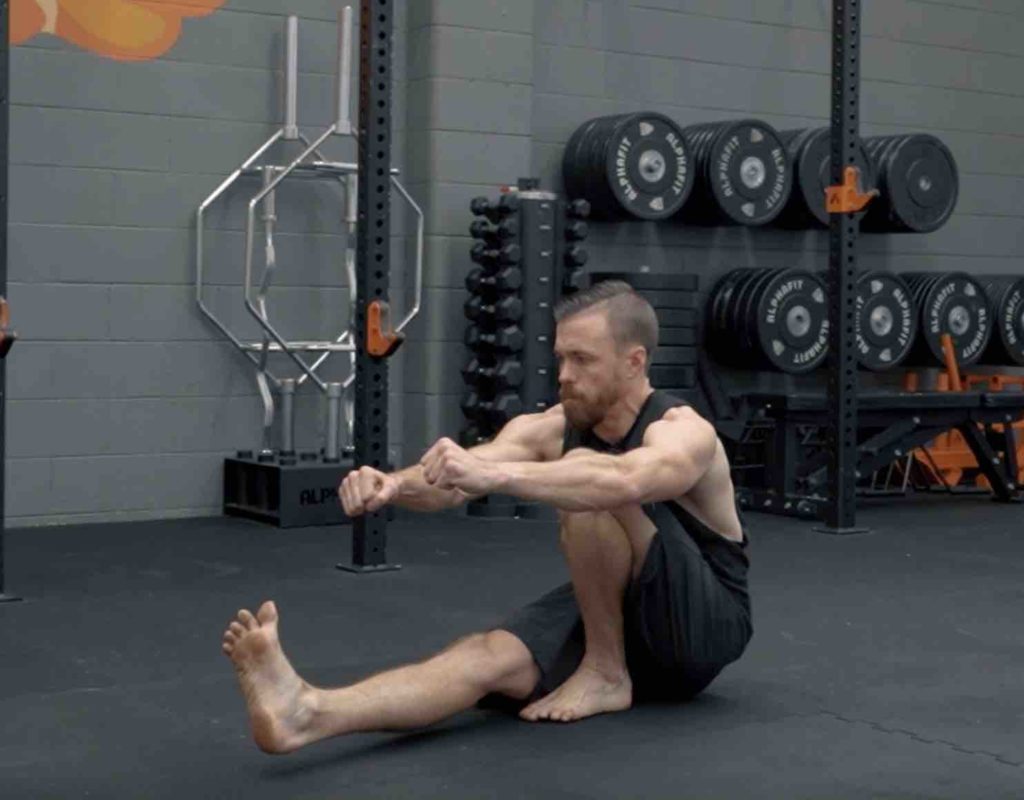The split squat is one of the most underrated strength movements in our arsenal. If you’re looking for squat variations the split squat, single leg squat and lunge have multiple benefits for your at-home or gym-based strength training.
What is a split squat?
The split squat is a compound leg exercise that is an alternative to traditional squats and deadlifts. It has numerous benefits that you won’t get when doing symmetrical stance exercises like barbell squats and deadlifts.
The feet are in a “split stance” or alternate position meaning one foot is ahead of the body and one is behind with most variations of the movement.
What are split squats good for?
When executed correctly, split squats can:
- Improve your squat form
- Reduce knee pain
- Increase length in your hip flexors and create better hip extension
- Build leg muscle mass
- Improve strength and endurance for runners or athletes
What muscles do split squats work?
The split squat exercise works the quadriceps and glutes predominantly but will also help develop smaller muscle groups like the hip flexors to improve hip extension and the stabilising muscles for lateral movement such as the Iliotibial Band or ITB.
Being in a split stance pattern will challenge your balance and force the smaller muscles of the legs to work more effectively alongside challenging trunk stability which makes it perfect for field sports or endurance athletes.
How to do a split squat
You can start in one of two positions, the bottom or the top of the movement. For the top of the movement:
- Take one step forward
- Then step back on the other leg
- Lower down until the knee touches the floor, a good rule of thumb is at the bottom of the movement the knee should be touching the floor directly under the hip
- Return to the top position
- Don’t move your feet, repeat steps 1-4 until you complete all repetitions on a single side and then switch legs

Is a split squat the same as a lunge?
When you’re completing the split squat, your feet do not move until you finish all reps on a single side. For a lunge, you are alternating your foot position every single rep. When you’re beginning your training journey split squats are a great place to start before you progress to the lunge if you have issues with balance or coordination.
Split squats also allow you to focus more on hypertrophy and strength whilst the lunge traditionally is better for conditioning and balance.
How heavy do split squats need to be?
Depending on your experience, goals and equipment the split squat can be completed with different weights. For the beginner and strength endurance athlete bodyweight may be sufficient. To build strength and hypertrophy, using dumbbells, a barbell or kettlebells will allow you to progressively overload the movement.
Start slow and increase over time sticking to the repetition ranges for your goals
- Strength: 10-15 heavy reps on each side (total) but not to failure
- Hypertrophy: Sets of 8-10 on each side for 3-4 sets
- Strength Endurance: Sets of 12+ each side for 3-5 sets or more
Get Fit in 5 Minutes

Too Busy to Work Out?
In 5 minutes a day, you’ll create an easy-to-follow workout habit that fits your busy schedule.
Mobility Exercises For Split Squats
Before you begin split squats and lunges you may need to focus on the mobility and stability exercises to help improve your range of motion. Exercises you can focus on are:
Related Posts:
- Hip Mobility: 14 Exercises to Improve Your Range of Motion
- Improve Your Ankle Mobility In 4 Simple Steps
- How To Improve Squat Mobility and Form In 4 Simple Steps
Split Squat Variations
Once you have mastered standard split squats, it’s time to add some more difficult versions to your training routine.
Bulgarian Split Squat
Placing the rear foot on top of a box or bench, complete the split squat movement. The benefits of the Bulgarian split squat are better depth in the movement and activation of the glutes and hamstrings. Get ready for the burn!

Front Foot Elevated Split Squat
Similar to the Bulgarian Split Squat, you elevate the front foot in the movement in order to target the knee and muscles around it like the VMO

Cossack Squat
Beginning out lateral (side to side) movements, the cossack squat is a great movement to develop lateral stability and strength. This movement will target adductors (groin) and abductors like the glute medius, minimus and TFL

ATG Split Squat
This movement has become popular from the knees-over-toes guy. Progressing from the Bulgarian split squat for its depth and the front foot elevated split squat for its ability to go knees over toes you can increase the difficulty by going for a longer stance and deeper into the movement.
Be sure to start with bodyweight only and progress slowly on this type of movement.
Related Posts:
Lunge Variations
Moving onto the lunge, try these lunge variations in your training to develop better balance and stability.
Pendulum Lunge
A pendulum lunge is where you step through the lunge movement. One foot stays in position whilst the other footsteps back and forth into the lunge position. This is perfect for developing the heel-to-toe movement for running.
Lateral Lunge/Side Lunge
Similar to the cossack squat, the lateral lunge demands more from the stabilising muscles of the leg and trunk. Stepping to one and dropping into the side lunge position and returning to the start will challenge the groin and outer muscles of the legs.
Skater Lunge
Challenging the body a little further, the skater lunge has you sweeping the rear leg behind your front leg. As a progression towards the pistol squat, it can be classed as a single-leg squat also as the rear leg has no real involvement in driving the movement.

Single Leg Squats
Once you’ve nailed the split squat and lunge variations, the single-leg squat is a great minimalist bodyweight progression you can add to your training. You can learn all about the pistol squat and the progressions here.
Airborne Lunge
The airborne lunge is one of the first progressions of the pistol squat, similar to the skater lunge the front leg does the work whilst the back leg is used as a guide for depth.

Pistol Squat
The ultimate bodyweight split squat movement is the pistol squat. Achieving your first ever pistol squat can sometimes be difficult but if you focus on building strength in split squats and lunge variations you have a higher likelihood of making it happen.

Related Posts: